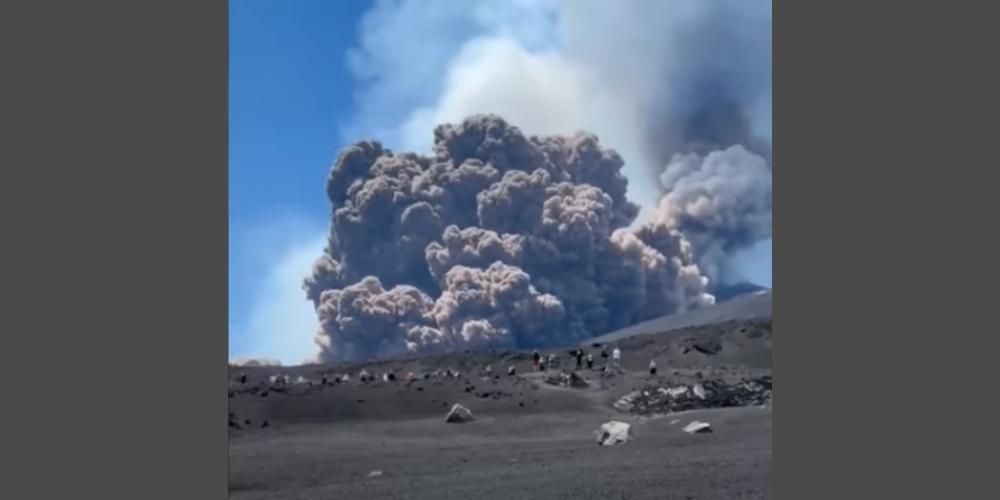Mount Etna, Europe’s tallest and most active volcano, erupted dramatically on 2 June 2025, sending a massive plume of ash and smoke high into the Sicilian sky and prompting tourists to flee the area.
The eruption occurred around 11:00 a.m. local time, coinciding with Italy’s Festa della Repubblica holiday when many visitors were on the volcano’s slopes.
According to Italy’s National Institute of Geophysics and Volcanology, the eruption was triggered by a partial collapse of the southeast crater, unleashing intense strombolian activity and lava flows that captivated onlookers.
The ash cloud soared to approximately 6.5 kilometres into the atmosphere, prompting a “code red” aviation alert. Despite the dramatic scenes, Catania and Palermo airports remained operational, with flights advised to avoid the immediate area.
Videos shared on social media captured the eruption’s force, with some tourists running down the slopes while others watched from a safe distance.
Local authorities have advised caution and recommended steering clear of the summit area as monitoring continues for potential further activity. While no injuries or significant damage have been reported so far, the eruption has served as a vivid reminder of the region’s ever-changing natural landscape.
Standing at about 3,330 metres, Mount Etna is renowned for its frequent displays of power. It remains a spectacular destination for travellers seeking to witness one of nature’s most awe-inspiring forces up close—though this week’s eruption shows that a bit of caution never goes astray.









